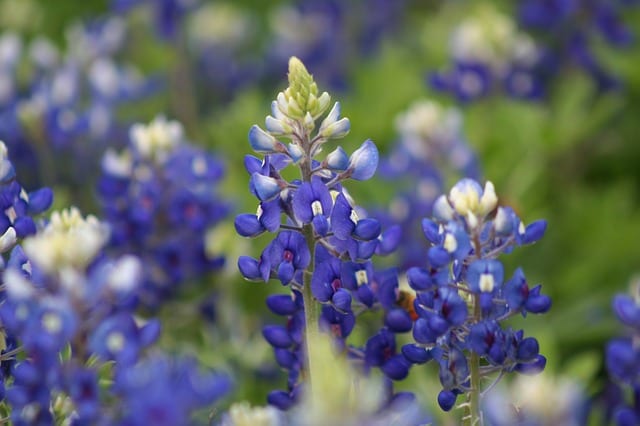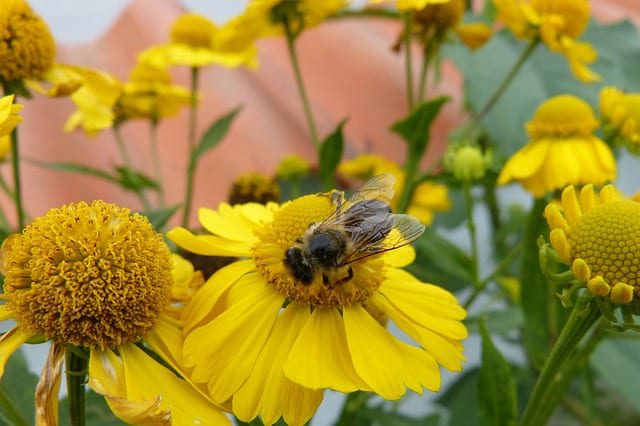On Wednesday I got to sit in on another great Rainbow Gardens seminar and decided to offer you all a little recap. Today’s seminar was on planting wildflowers in San Antonio. Laura Jarvis walked attendees through the steps needed to successfully sow wildflower seeds. While I can’t offer you all the freebies the attendees received, like packets of wildflower seeds and a tour of our Bandera butterfly garden to see some of the wildflowers in action, I can offer you the planting steps for success.
The best time to plant wildflowers in San Antonio is fall! October and November are the ideal months for city dwellers and that means now! Read our steps for success below and then come pick up one of our specially blended seed mixes (pollinator mix, or native mix) or browse the racks for individual packets of wildflower seeds. We’ve got you covered.


7 Steps for Planting Wildflowers in San Antonio
- Choose a very sunny site.
- Prep area before planting wildflower seeds.
- Soak soil before planting seeds.
- Scatter wildflower seeds in two directions.
- Soil contact is key, tamp down seeds.
- Water seeds according to rainfall.
- Enjoy wildflowers and all the pollinators that visit.
Wildflower Seed Planting Details
1. Choose a very sunny site. Most wildflower seeds need sun to germinate, and grow. We suggest a site with a minimum of 8 hours of full sunshine.
2. Prep area before planting wildflower seeds. Many people think they can throw wildflower seeds out into the garden or yard and that’s all that is needed. Not so fast. You may get some seeds to sprout, but you will have more success if you do a little prep. (Not too much though…read on).
Wildflowers planted in areas where turf or weeds exist have to compete to grow. Tall blades of turf or lanky weeds can literally throw shade on your seeds and prevent them from receiving the sunlight they need in order to germinate.
To prep: Set your mower on the lowest setting and mow the area as short as you can. What you are trying to do is expose some soil for your seeds to settle in to.
You can lightly rake the area, but there is no need to rake any deeper than 1″ down. You don’t want to disturb any dormant weed seeds that lie any deeper below the soil.
3. Soak soil before planting seeds. This is an extra tip that Laura Jarvis offered our seminar attendees and I really see how this would be beneficial. By giving your prepped area a deep soak, you are offering your wildflower seeds the best start. The moist soil will help the seeds germinate and also speed up the growth of your wildflowers.


4. Scatter your wildflower seeds in a couple of directions. Imagine you are feeding chickens and scatter half of your seeds across the area in one direction. Then turn perpendicular and scatter the other half of your seeds. This ensures an even application and eliminates any large, vacant patches.
5. Soil contact is key. Tamp down seeds. The biggest mistake (besides timing and lack of sun) that people make when planting wildflower seeds is not getting good soil contact. This is imperative for success, but DO NOT get it confused with burying your seeds in the soil. The seeds do not need that. You can achieve good soil contact just by walking across the area that you just seeded a couple of times. As a matter of fact, many of the seeds will be visible on top of the soil and that is okay. (For larger areas of wildflower plantings, like acres, a rollerpacker might be easier to tamp your seeds down, but in most wildflower gardens in home landscapes, just tamping them down with your boots is sufficient.)
6. Water your seeds after planting and then according to rainfall. Wildflowers will generally germinate with natural rainfall, but if we have an exceptionally dry October and November, you’ll need to offer some supplemental irrigation. That presoak you did before planting will give your seeds the moist environment they do best in, but you will need to make sure they stay moist for the next 4-6 weeks for best success. Moist does not mean drenched. Light, frequent watering to make sure the soil is not drying out may be needed daily if there is no rain. Once your seeds germinate, your watering can ease up. See our Wildflower Planting Guide for some extra watering details.


7. Enjoy the wildflowers and all the pollinators that come visit. This isn’t really a step, but it’s enjoying the fruits of your labor. Enjoy watching the seeds germinate. Enjoy the first bloom on your first homegrown wildflower. Enjoy watching the butterflies, bees, hummingbirds, and birds swoop in to feast on all the nectar and seeds your wildflowers provide. Enjoy knowing that you just contributed to the sustainability of our local wildlife.
Just Enjoy!
~The Happy Gardener, Lisa Mulroy


I have a question, My entire card is full of trees. None of my yard gets full sun. Can I still plant wildflowers or is this a mute idea? Thank you, in advance for answering my question.
Hi Lori,
Unfortunately, a yard full of shade and trees is not the ideal conditions for wildflowers to grow successfully. They really need no less than 8 hours of sun and that is not possible with what it sounds like you have. Any chance you have an area in the front that may receive full sun? Maybe you could place a large trough-like planter there and get some wildflowers growing. There are a very few wildflowers that tolerate shade, and unfortunately the ones that do best in our area aren’t generally in that category.
Do I need to scarify my bluebonnet seeds?
Hard coated seed like bluebonnets and others can get a boost by scarifying them before planting, or soaking for 24 hours. In all honesty, they will germinate naturally, but the scarifying just gets them started a little sooner.
Hi! I have an area which I covered in about 3 in of Mulch in order to kill grass. Would love to plant wildflowers but then read that wildflower seeds and Mulch do not mix well. Should I cover the Mulch with 1 in soil and plant seeds this fall? Or wait until the Mulch breaks down and plant in March?
Hi Kimberly,
Did the mulch already kill off the grass? If so, s it possible to rake off the mulch and use it in other areas of your landscape for the time being? Success of wildflower seeds really relies on good soil contact. It’s not recommended to plant wildflower seeds in spring as most need a period of cold stratification through winter to aid in germination.
I have some green shoots I’ve been pulling so don’t think it’s dead yet. But I will wait to seed until next year to ensure germination. Will do some seeding in other parts of the yard though!
Sounds like a good plan!
Should the area be lightly mulched after the deep soaking and then spreading seeds. Will this help keeping the soil moist.
You probably just need to water more often, in lieu of rain. We typically don’t recommend covering wildflower seeds as it could hinder germination. And mulching before could hinder the seed’s contact with the soil. With the cooler temps in fall, soil doesn’t dry out as quickly.